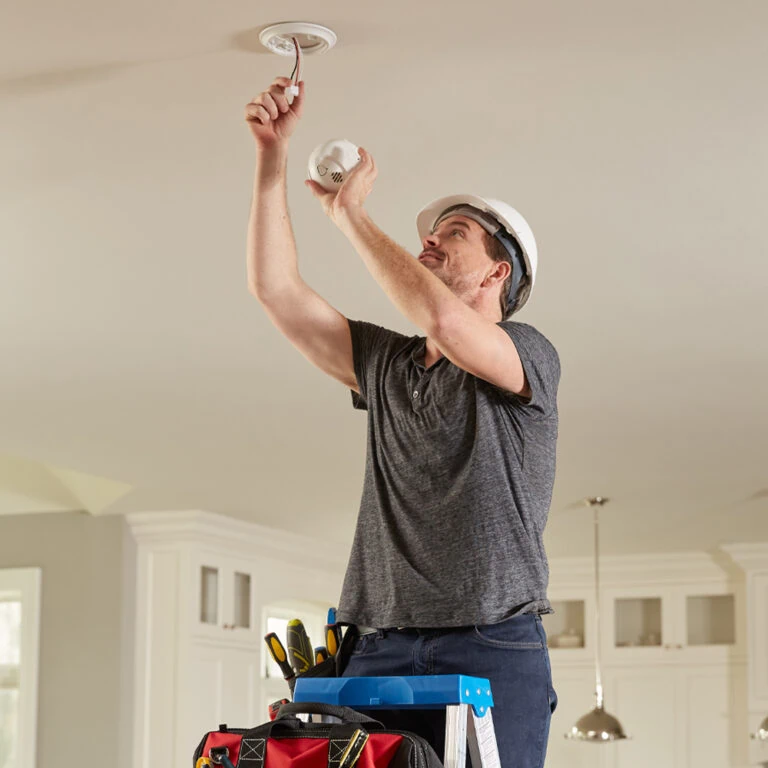BRK Introduces Precision Detection Alarms to Meet Changing Smoke Alarm Standards
By Angy Steiner
A project nearly 10 years in the making, the smoke alarm standards outlined in UL 217, Standard for Smoke Alarms, 8th Edition, were created to address modern construction materials and home furnishings – including the use of synthetic materials and the prevalence of open floor plans and higher ceilings – that have decreased the average amount of time people have to escape a home fire safely. In fact, average escape times have decreased from 10-15 minutes in the 1970s to just 1-2 minutes in today’s modern homes, according to the National Fire Protection Association (NFPA).
The Evolution of the Standard for Smoke Alarms
According to an article published by UL, standards are always evolving to address innovations in safety science and technology. In developing and maintaining these standards, UL, a leader in facilitating the development of standards for performance of smoke alarms for decades, partners with industry experts, regulators and end users to assure that advances in safety and technology are inherent and drive effectiveness. In fact, these updates go all the way back to 1976, when UL collaborated with the National Institute of Standards and Technology (NIST) to develop the first Standard on smoke alarms. Homes today are, on average, 56 percent larger than homes built in 1970, with synthetic materials, which burn hotter and faster than traditionally organic materials like feather-down, cotton, wool and linen, making up much of today’s furnishings. High ceilings, open floor plans, and popular construction materials featured in many modern homes also contribute to the faster spread of fire and declining escape times.
The 8th Edition is the result of several testing updates to bring a significant upgrade to make alarms better suited for the modern home. This new standard will go into effect June 30, 2024, for all manufacturers of smoke and combination smoke and carbon monoxide (CO) alarms – and because UL 217 is cited in many building codes and state laws pertaining to smoke alarms for existing residential units, compliance is not optional.
Adapting to Modern Homes
More than 200 technical changes have been incorporated into the manufacturing process to help better detect and warn of fires in homes built and furnished with modern construction materials. Most notably, three new fire tests have been added to the standards criteria – two polyurethane foam fire tests (smoldering and flaming), and a new cooking nuisance alarm test. According to the NFPA, nuisance alarms are a leading reason for disconnected smoke alarms –and roughly three out of five fire deaths happen in homes with either no smoke alarms or no working smoke alarms. As reiterated by UL, disabling a smoke alarm could prove deadly, and standards matter when it comes to addressing this critical safety issue.
In order to enable manufacturers to create alarms that are more responsive and do not trigger unnecessary alerts while cooking, UL undertook a research initiative to gather data on smoke behavior during typical cooking scenarios. This study resulted in the establishment of updated test criteria for evaluating nuisance alarms.
To meet these standards, BRK has updated its entire line-up of smoke and combination smoke and CO alarms. BRK’s latest Precision Detection™ line of products feature advanced sensing technology to detect smoke faster and provide early warning, allowing occupants more time to escape. They are also engineered to address agency requirements related to nuisance alarms, the often unwanted and non-emergency alarms that may be caused by non-fire cooking smoke or steam.
How the New Alarms Benefit Builders
These Precision Detection alarms also include several models of 10-year sealed battery alarms, which are an ideal choice for builders.
The lineup of BRK 10-year battery smoke alarms offer hassle-free devices that are either hardwired with a 10-year battery backup or battery-powered with a 10-year sealed lithium battery. This eliminates the necessity for frequent battery replacements throughout the alarm’s lifespan, providing a hands-off and worry-free experience for the homeowners. For multifamily residences, installing 10-year battery alarms helps the property managers ensure the facility is protected without having to manage battery replacements in each unit. Different models of BRK’s 10-year battery alarms feature various additional benefits, such as interconnecting capabilities, voice and location alerts, visual warnings and more.
In order to make this transition as easy as possible on builders, BRK’s 8th Edition smoke and combination smoke and CO alarms will be readily available through well-established and strategically placed distributors, which can be found here, prior to the new standard taking effect in June.
Home building is a complicated process, but choosing products that help protect what matters most is simple. For more information about BRK Precision Detection Alarms, visit brkelectronics.com.
About the author: Angy Steiner is director of sales for the electrical division of Resideo Products & Solutions. Steiner has decades of experience serving the needs of professionals in the residential building industry, with a keen focus on fire safety and indoor air quality devices. Trained in management and communications, Steiner brings added expertise in the HVAC, plumbing and MRO businesses specializing in wholesale distribution. You can reach her at [email protected].




